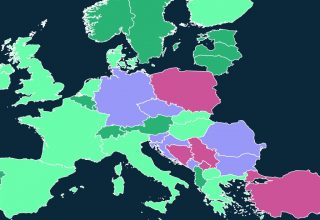*How the German coal exit translates to our countdown
Though the end date for coal is foreseen in 2038 only, the law does retire approximately 23 GW prior to 2030. For lignite plants, a plant-specific phaseout pathway exists, but for hard coal, the law does not explicitly state which plants shall retire when, as the closure pathway shall be defined through auctions first. In order to reflect that, according to the law, all but 8 GW of German hard coal capacity will retire by 2030, we made assumptions on which hard coal plants would retire before 2030 to align the hard coal closure path with our counter’s methodology, which only registers retirements when the exact coal plant is known.
In December 2020, a set of three hard coal plants that, according to our evaluation, were implicitly intended to retire after 2030 (mostly because of their young age), unexpectedly won in the first auction that determines hard coal retirements. As a result, we added it to the list of plants that are to retire by 2030 at the latest. At the same time, we did not assume that other plants are now set to retire later, i.e. after 2030, just to fulfill the intended phase-out pathway of the German law. Instead, the list of plants set to retire by 2030 grew by three. This leads to a new setup with less than the 8 GW of hard coal capacity that are described in the law will be left after 2030. In short: we anticipate a quicker phase-out of German hard coal capacity.
Despite RWE's announcement in 2022 that it plans to exit coal by 2030, the federal government has the authority to retain some of RWE's coal units as grid reserve beyond 2030. We have therefore not yet included the plants covered by RWE's announcement in the list of coal plants scheduled to retire by 2030 at the latest.





